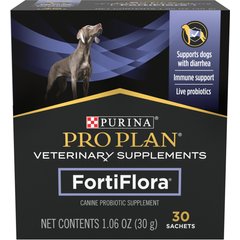Why Do Pet Medications Cost So Much?
By T. J. Dunn, Jr., DVM
It was one of those situations I dread. I had just examined Fritzie and spent quite a bit of time making a diagnosis and suggesting treatment for the little Schnauzer’s heart problem. My receptionist buzzed me on the intercom … "Mrs. Smith is still here and wants to talk to you about her bill. She’s certain that you made a mistake and overcharged her for the medication you dispensed for Fritzie. I tried to explain that the $57 was the correct price for the two-month supply but she's certain that’s not right. Good luck!"
After about twenty minutes trying to explain why many of today’s state of the art medications are expensive and that I am not in collusion with the drug companies to soak the general public and that I have an obligation to prescribe whatever medication I believe will be best for my patients, Mrs. Smith and I resumed our day.
It made me uneasy, though, because I wondered how many other Mrs. Smiths were out there who did not call or question me when taken by surprise at the cost of their pet’s medication.
I resolved to provide each client with a handout to accompany every prescription dispensed. It will explain why some medications are so expensive. At least it would save me some stress, and at best it would inform pet owners about the expense pharmaceutical manufacturers must go through to get a drug to market.
And so I did … and now you have the opportunity to read it.
Getting a Medication on the Shelf
Just like any other business, drug companies must make a return on their investment (Read: make a profit) in their products, otherwise they cease to exist. If innovative, safe and effective medications are no longer available for our animals and for us, then the goal of quality of life and freedom from disease will remain out of reach and exist as mere fantasy.
Nearly 300 drugs are currently approved by the FDA (Food and Drug Administration) for use in companion animals (dogs, cats, and horses). Many of these consist of the same active ingredient found in their human drug counterparts; and all must go through the same safety and efficacy procedures designated by the FDA.
The process of getting a chemical from the discovery stage to a saleable product is a long, governmentally regulated, financially draining, scientifically exact, and statistically verifiable process. All major drug companies employ experts in a wide field of science and technology, accounting and finance. Biochemists, veterinarians, physicians, statisticians, accountants and lawyers all must play a coordinated and dedicated role in putting that final product on the veterinarian’s shelf.
It is commonly estimated that when companies do mass screenings of chemicals for potential use as a medication, only one in one thousand will show any promise at all. And if one hundred of these promising chemicals are tested further, only a single one would pass all the criteria required by a company to target it for production.
Let’s say a pharmaceutical manufacturer does decide that a chemical has potential use, what then? The company submits an application to the Food and Drug Administration's Center for Veterinary Medicine, the organization within FDA that approves drugs designed for animals. The process of approval of a substance for licensing is highly regulated. Any animal drug must pass the same SAFETY and EFFICACY protocols that a product for human use must pass.
In the case of animal drug testing the number of individuals used in clinical trial testing is not as large as for products intended for human use. But the same rules and regulations and background verifications must be documented before a new animal or human drug is submitted to the FDA for approval.
Just the review process -- where the company works with the FDA to meet requirements for proper design of the safety and efficacy studies -- may take years to complete. And the time a pharmaceutical manufacturer takes to get a product to market (usually more than five years for a canine product) has a huge impact on how long it will take for the company to make a return on its investment.
A good example is provided by Ann Jernigan, Head, Pharmaceutical Discovery Group at Pfizer Animal Health, Groton, CT. She states that the innovative topically applied parasite control medication called Revolution was nearly ten years in the discovery process. Literally thousands of products were screened before Revolution’s active ingredient, called Selemectin, was selected for development. Jernigan indicates that several millions of dollars are commonly spent on the development of animal health drugs and hundreds of millions on human medication development.
Robert Livingston, DVM, of the Animal Health Institute which represents manufacturers of medications for farm and companion animals, states "Even if everything goes well in the review and testing process, it often takes longer than five years to get a canine drug on the veterinarian’s shelf. It is extremely costly and time consuming to get the required numbers of actual cases of treated and untreated control animals for the necessary studies."
He goes on to say that "Drugs intended for use in animals often require an investment of $20-100 million, while for human drugs the cost can reach $500 million or more before any actual sales of the drug are permitted."
And even after a medication becomes available, post marketing safety evaluation for adverse effects goes on for the life of the medication.
Finally, after going through all the research, development, clinical trials and FDA review, a company has only a limited period of time remaining on their patent protection to recoup their investment. It really makes no sense to produce something and sell it at a price that allows you to regain the investment it took to make it, only to have another company copy it and sell it at a lower price.
The copycat company has no research and development costs, no clinical trials to perform or document, no new product marketing to do. Therefore, the price the manufacturer sets for a drug reflects the need for the manufacturer to get a return on that huge expense of time and effort to obtain a license to sell the product.
Making a profit is a necessary factor in the whole equation. If the drug company does not make a profit sufficient to cover all costs of research, development, production and marketing, there will be no state-of-the-art medication for your dog’s medical problem. If the veterinarian does not make a profit from dispensing the medication (or the pharmacy a profit if you obtain a prescription and get it filled at some other source), there will be no animal hospital or pharmacy for you to rely on for help when your pet is in need.
Well, that’s my handout for anyone who wants to know why Fritzie’s heart medication costs so much. And you read it first right here! Obtaining a diagnosis is the first part of a successful trip to a doctor’s office. The second part is acquiring the proper medication or treatment protocol to alleviate the ailment that was diagnosed.
Today’s dogs have a distinct advantage over their ancestors of just a few years ago. But safe and effective medications do come at a cost -- a cost that most dog owners are more than happy to pay if the medications improve the quality of life for our canine friends.
Image: Erich Ferdinand / via Flickr
Vet Recommended Health Support
- Nutramax Imuquin Immune Support Powder Immune Supplement for Dogs, 30 count$24.99Chewy Price
- Purina Pro Plan Veterinary Diets FortiFlora Powder Probiotic Digestive Supplement for Dogs, 30 count$30.99Chewy Price
- Purina Pro Plan Adult Sensitive Skin & Stomach Salmon & Rice Formula Dry Dog Food, 16-lb bag$54.48Chewy Price
- Virbac Epi-Otic Advanced Ear Cleaner for Dogs & Cats, 4-fl oz bottle$12.34Chewy Price




